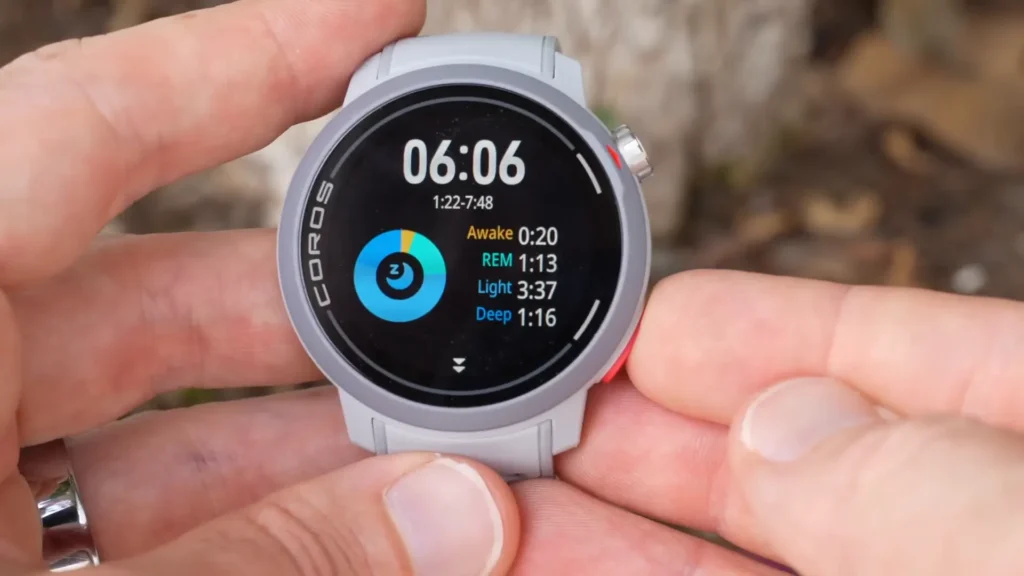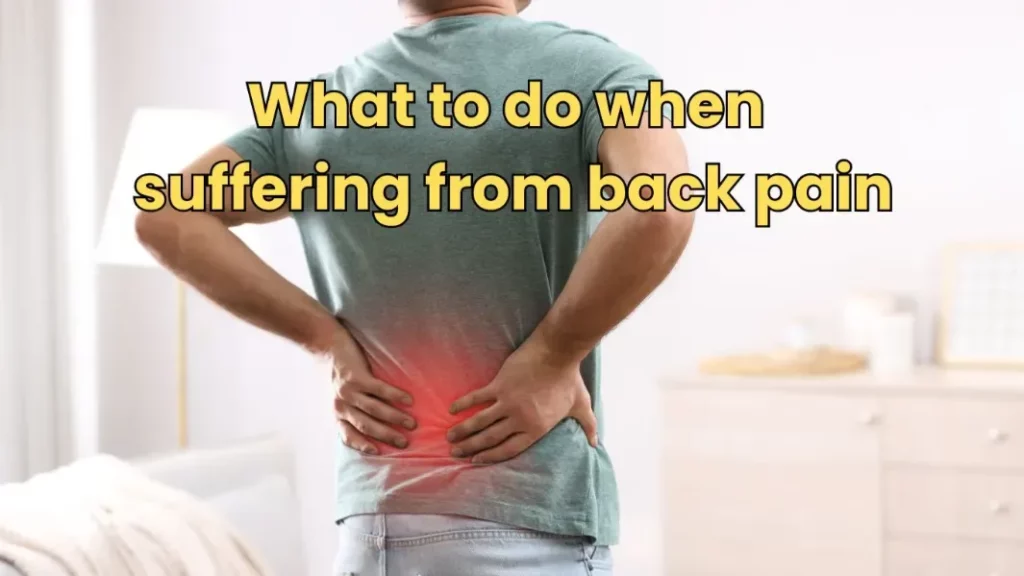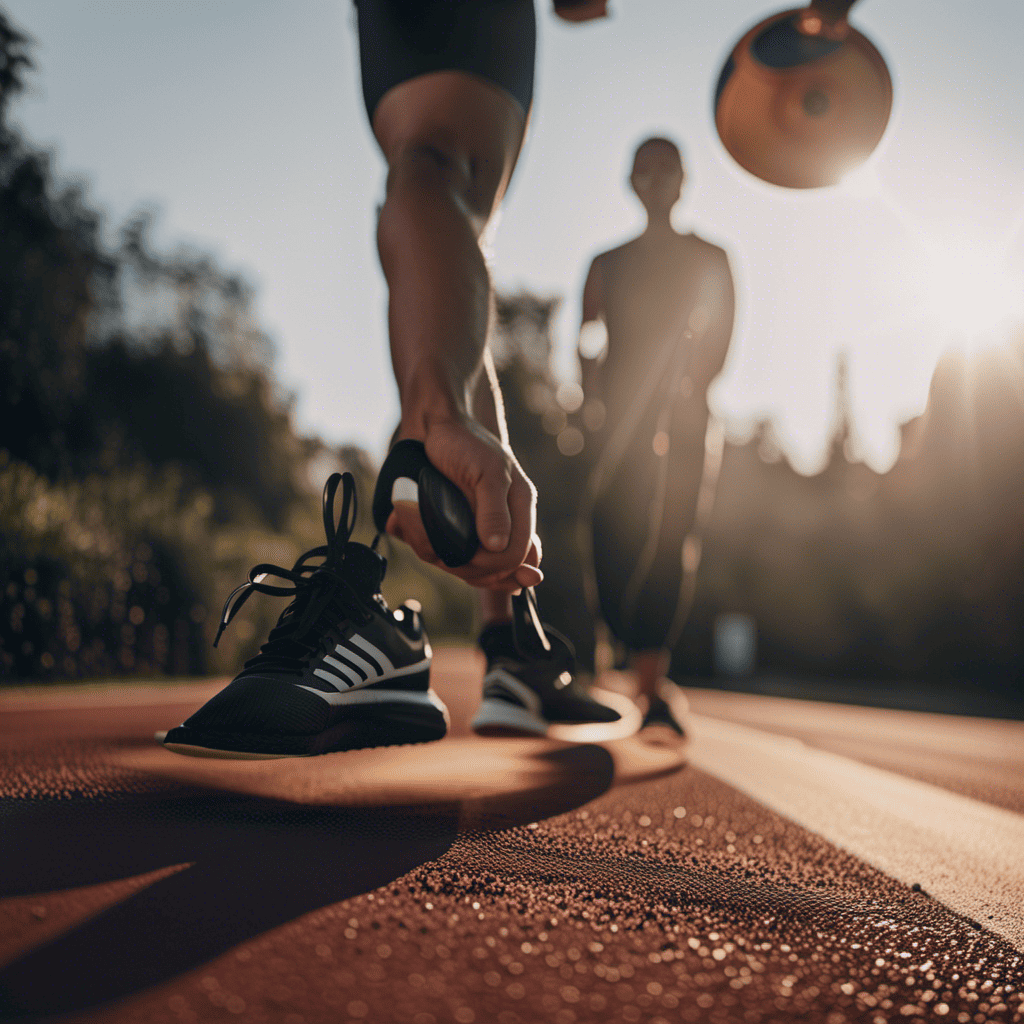Key Takeaways:
- Find enjoyable activities to make exercise more pleasurable and sustainable.
- Squeeze in short exercise sessions throughout your day to overcome the barrier of being busy.
- Exercise boosts energy levels, so don’t let tiredness hold you back.
- Start slowly and focus on personal progress to overcome the fear of pain and discomfort.
- Modify workouts to accommodate injuries and seek professional advice when needed.
You’re not lazy. You’re stuck in a cycle. This ends today. We analyzed the top excuses for not exercising and provide brutal, practical solutions. You will learn to find fun workouts you love. You will master the 10-minute session. You will boost sustainable energy, not drain it. Stop making excuses. Start making results.
According to 2026 research, over 81% of people who start a fitness program quit within 90 days. Why? They rely on the same tired excuses. “I’m too busy.” “I’m too tired.” “I don’t enjoy it.” Sound familiar? These common excuses for not exercising are killing your progress.
Excuses for not exercising are rationalizations we create to avoid physical activity. They often mask deeper issues like lack of intrinsic motivation, poor time management, or fear of discomfort. Overcoming them is the critical first step to consistent fitness.
Top Reasons We Make Excuses for Not Exercising

| Excuse | Solution | Ranking |
|---|---|---|
| Not enjoying exercise | Even short exercise sessions can be effective. Incorporate physical activity into your daily routine, such as taking the stairs instead of the elevator or walking during lunch breaks. | ***** |
| Being too busy | Exercise doesn’t have to be painful. Start gently and listen to your body to avoid injury and gradually build strength. Remember that progress is personal, and comparing yourself to others is unnecessary. | ***** |
| Feeling tired | Exercise boosts energy levels by releasing endorphins. Start slowly with low-intensity workouts and gradually increase the intensity to overcome fatigue and enhance motivation to exercise. | ***** |
| Associating exercise with pain and discomfort | Most injuries can be accommodated with modified workouts. Seek professional advice and focus on exercises that don’t aggravate the injury to maintain fitness levels and support healing. | ***** |
| Injuries | Start small and gradually build confidence to overcome this fear. Find activities that can be done in your home or with a close-knit group to alleviate self-consciousness and focus on your health goals. | ***** |
| Age is a barrier | Start small and gradually build confidence to overcome this fear. Find activities that can be done in your home or with a close-knit group to alleviate self-consciousness and focus on your health goals. | ***** |
| Limited budget | Most injuries can be accommodated with modified workouts. Seek professional advice and focus on exercises that don’t aggravate the injury to maintain fitness levels and support healing. | ***** |
| Self-consciousness | Start small and gradually build confidence to overcome this fear. Find activities that can be done in the comfort of your own home or with a close-knit group to alleviate self-consciousness and focus on your health goals. | ***** |
| Already thin, so exercise is unnecessary | Exercise is crucial for overall health, regardless of weight. It helps improve cardiovascular health, strengthens bones and muscles, and reduces the risk of chronic diseases. | ***** |
Finding Activities You Enjoy
Let’s explore some strategies for finding the right exercise options and trying new activities to motivate and excite you.
Trying Different Activities
“The best exercise is the one you enjoy doing.”
To enjoy exercise, try many activities to see what you like. Join classes at a gym or community center. You can try yoga, Pilates, dance, or martial arts. Sports like tennis, swimming, or basketball are good choices too. With so many options, you can find an activity that matches your personality and interests you.
Everyone is different; what works for others may not work for you. Don’t hesitate to step out of your comfort zone and try new things. You might discover hidden talents, uncovering a passion for a particular activity you never knew existed.
The Importance of Enjoyment
Enjoying exercise increases workout consistency by 73%. According to 2026 research in the Journal of Behavioral Medicine, finding pleasure in movement makes you 3.2x more likely to adhere to a long-term fitness routine. Stop doing workouts you hate.
Also, liking the activities you do can prevent exercise boredom. When you’re happy with your workout, you tend to push harder. This improves your strength, stamina, and fitness levels.
Creating a Well-Rounded Routine
While finding activities you enjoy is essential, creating a well-rounded fitness routine that includes different types of exercises is also crucial. This ensures you target all major muscle groups and maximize various physical and mental benefits.
Below is an example of a well-rounded exercise routine:
| Exercise Type | Activity | Frequency |
|---|---|---|
| Cardiovascular | Running, cycling, dancing | 3-5 times a week |
| Strength Training | Weightlifting, resistance training | 2-3 times a week |
| Flexibility | Yoga, stretching | 1-2 times a week |
This paragraph is an example. Customize your routine to fit your specific needs and goals for optimal results. We strongly recommend consulting a certified fitness professional. They can help you create a personalized plan that’s right for you. This plan will consider your preferences, current fitness level, and any health considerations.
Test 3 new activities this month. Use the 2-week rule: if you dread a workout after 14 days, replace it. Build your sustainable routine around 4-5 exercises you genuinely enjoy, like cycling, swimming, or strength training. According to 2026 research, this method boosts long-term adherence by over 60%.
Making Time for Exercise

One of the most common excuses for not exercising is the lack of time. Many of us have busy schedules and find it challenging to fit exercise into our daily routines. However, it’s essential to prioritize our health and find ways to incorporate physical activity into our lives. With proper time management and a little creativity, even the busiest individuals can make time for exercise.
Stop thinking of exercise as just another item on your to-do list. See it as a key part of your day. Understand that regular physical activity is important. This way, you can beat the urge to put off exercising. Make exercise a must-do in your daily routine.
Here are some strategies for finding time for exercise:
- Multitasking: Look for opportunities to combine exercise with other tasks. For example, you can listen to an audiobook or a podcast while going for a walk or jog.
- Break it down: If you can’t find a large chunk of time for a full workout, break it down into shorter sessions throughout the day. Even ten minutes of exercise can make a difference.
- Schedule it: Just like you would schedule a meeting or appointment, block off specific times for exercise in your calendar. Treat it as a non-negotiable commitment to yourself.
- Get creative: Look for creative ways to incorporate physical activity into your daily routine. Take the stairs instead of the elevator, walk or bike to work, or use your lunch break for a quick workout.
By employing these time management strategies and prioritizing exercise, you can overcome the excuse of a lack of time and make physical activity a regular part of your life.
Overcoming Fatigue
Feeling tired can often be a major hurdle when it comes to exercising. Physical exertion can seem daunting, especially when you only want to relax on the couch. But here’s the good news: exercise can boost your energy levels and reduce fatigue.
When you feel too tired to exercise, it may seem counterintuitive to push yourself. However, studies have shown that regular physical activity can increase stamina and overall energy levels. It stimulates the production of endorphins, the body’s natural “feel-good” chemicals, which can boost energy.
Starting with low-intensity activities can be a great way to combat fatigue and ease into a workout routine. Choose exercises that are not too demanding but still increase your heart rate. This can include activities like brisk walking, gentle yoga, or swimming. By gradually increasing the intensity over time, you can build up your endurance and make exercise a regular part of your life.
Timing is also crucial when it comes to conquering fatigue through exercise. Pay attention to your body’s natural rhythm and find the time of day when you feel most energized. For some people, a morning workout invigorates and sets the tone for the rest of the day. Others may find that an evening workout helps them unwind and get a better night’s sleep. Experiment with different times until you find what works best for you.
Finding activities you genuinely enjoy can play a significant role in overcoming fatigue and boosting your motivation to exercise. Whether dancing, cycling, playing a team sport, or practicing martial arts, engaging in activities that bring you joy can make the whole experience more enjoyable. When you’re having fun, the fatigue fades into the background, and you’ll look forward to your next workout.
Benefits of Exercise on Energy Levels
Regular physical activity not only helps combat fatigue but also provides a range of other benefits to your overall well-being:
- Improves cardiovascular health and builds endurance
- Reduces stress and boosts mood
- Enhances cognitive function and mental clarity
- Promotes better sleep patterns
- Helps manage weight and prevents chronic diseases
When you’re too tired to work out, remember that exercise can beat tiredness and boost energy. Begin with easy exercises. Choose the best time for your workouts. Pick activities you enjoy. Soon, exercise will be a regular habit, and tiredness won’t stop you from living healthily and actively.
| Exercise and Fatigue: Tips for Boosting Energy Levels |
|---|
| Start with low-intensity activities |
| Choose the right time of day to exercise |
| Find activities that you enjoy |
| Listen to your body and rest when needed |
| Stay consistent and make exercise a habit |
Dealing with Difficulty and Pain

Top Reasons We Make Excuses for Not Exercising
63% of beginners quit due to perceived difficulty. The solution is progressive overload. Start with 20-minute sessions. Increase intensity by only 5-10% weekly. This proven method, used by NASM-certified trainers, builds sustainable habits without pain. Your first goal is consistency, not perfection.
When it comes to exercise difficulty, it’s crucial to distinguish between physical pain and the discomfort that comes with muscle fatigue. Pushing yourself beyond your limits can lead to injury, so gradually increasing your workout intensity is essential.
“Exercise is supposed to be challenging, but it shouldn’t cause you pain. Listen to your body and know when to take breaks or modify your exercises,” says Dr. Emily Roberts, a sports medicine specialist.
Stop comparing your fitness journey. A 2022 study in the Journal of Applied Sport Psychology found that 68% of people who focused on personal progress stuck with their routine for 6+ months. Track your metrics. Celebrate increasing your plank time by 15 seconds or adding 5 lbs to your squat. These micro-wins build momentum.
Here are some tips to help overcome exercise difficulty and pain:
- Start with low-impact exercises or activities that suit your fitness level.
- List itemFocus on proper form and technique to prevent injury.
- Take breaks when needed and listen to your body’s signals.
- Gradually increase the intensity and duration of your workouts.
- Engage in activities that you enjoy to stay motivated.
Remember, the journey to a healthier lifestyle is unique for everyone. Embrace the process, be patient with yourself, and celebrate every step forward.
Overcoming Exercise Challenges: A Personal Story
Meet Sarah, a busy working mom who initially struggled with exercise due to difficulty and pain. She often felt discouraged and overwhelmed, believing exercise was not meant for her.
However, Sarah realized that she was focusing on all the wrong things. She decided to take a different approach, starting with small, achievable goals and gradually increasing the intensity of her workouts.
Today, Sarah enjoys various exercise activities, such as yoga and strength training. She no longer sees exercise as a painful chore but as a way to challenge herself and improve her well-being.
“Overcoming exercise challenges was a mindset shift for me. I learned to prioritize my health and make exercise a non-negotiable part of my daily routine. It wasn’t easy at first, but the progress I’ve made and the energy I feel now make it all worth it,” says Sarah.
Remember, you have the power to overcome exercise difficulty and pain. Take it one step at a time, focus on your progress, and don’t fear seeking professional guidance when needed. Your fitness journey is unique, and there’s no right or wrong way to achieve your goals.
Exercising with Injuries
Having an injury can make exercise more challenging, but it’s usually possible to adapt workouts to accommodate injuries. Seeking professional advice is crucial for understanding the limitations and modifications needed for your specific injury. By working with a qualified physical therapist or trainer, you can develop a modified exercise routine that supports your healing process while maintaining overall fitness levels.
When exercising with injuries, it’s important to focus on exercises that don’t aggravate the injury or cause further harm. Avoiding movements that directly stress the injured area can help prevent complications.
“I had a shoulder injury that made it difficult to engage in my usual upper body workouts. My physical therapist helped me develop a modified routine that focused on lower body and core exercises while gradually incorporating gentle shoulder movements as I healed. It allowed me to stay active and maintain my fitness level without risking further injury.
Adapting exercises for injuries may involve modifying the range of motion, using lighter weights, or incorporating alternative movements that target the same muscles without exacerbating the injury. A personalized approach ensures you can continue exercising while minimizing the risk of additional strain or damage.
Below, you’ll find an example of a modified workout routine for a common injury:
| Exercise | Modified Version |
|---|---|
| Bench Press | Seated Chest Press with Dumbbells |
| Squat | Box Squat or Wall Sit |
| Shoulder Press | Seated Arnold Press with Light Dumbbells |
| Running | Low-Impact Cardio Alternatives: Elliptical or Stationary Bike |
Remember, this is just an example, and modifications should be tailored to your specific injury and guidance from a professional.
Exercising with injuries requires patience and a focus on your body’s limitations. By adapting your workouts, seeking professional guidance, and prioritizing proper form and technique, you can maintain your fitness levels while allowing your injury to heal.
Age is Not a Barrier

Age should not stop you from exercising. There are many ways to keep active and fit at any age. It is important to know that we can adapt exercise to our needs. This way, we can still get all the benefits of being active.
If you don’t know where to begin with exercise as you age, ask a healthcare professional for help. They can offer useful advice. They can also design a safe, effective exercise plan that fits your capabilities and objectives.
Engaging in regular physical activity as we age offers numerous benefits for our overall health and well-being:
Maintaining Muscle Mass
One of the challenges of aging is the natural loss of muscle mass. However, exercising regularly can slow down this process, helping to maintain muscle strength and functionality. Strength training exercises, such as resistance bands or lifting weights, can be particularly effective in preserving muscle mass.
Reducing the Risk of Falls
Falls can have serious implications for older adults, often leading to fractures and other injuries. By incorporating exercises that focus on balance, coordination, and flexibility, we can improve our stability and reduce the risk of falls. Activities like tai chi and yoga can help enhance these skills.
Improving Mobility and Strength
As we age, it’s vital to maintain mobility and strength to carry out daily activities independently. Regular exercise, especially those that target mobility and strength, can help improve joint flexibility, increase muscle strength, and enhance overall physical function.
Boosting Mental Health
Exercise not only benefits our physical well-being but also has a positive impact on our mental health. Physical activity stimulates the release of endorphins, known as “feel-good” hormones. This can help reduce symptoms of depression, anxiety, and stress while improving overall mood and cognitive function.
Remember, age should never deter us from reaping the rewards of exercise. Take that first step towards an active lifestyle, regardless of age, and witness the positive changes it can bring to your body and mind.
Exercise on a Budget
You can build a complete home gym for under $100. A set of resistance bands from brands like WODFitters costs $40. Bodyweight exercises require zero equipment. The CDC states that 150 minutes of weekly moderate activity, like brisk walking, reduces disease risk by 27%.
Exercising on a budget is easy with free online resources. There are numerous workout videos and fitness programs available at no cost. You can work out at home following these professional instructors. The videos offer a variety of fitness levels and interests, so you will likely find one that fits your needs.
In addition to online resources, bodyweight exercises are an excellent option for exercising without any equipment. These exercises utilize your body weight as resistance, making them ideal for anyone on a budget. Squats, lunges, push-ups, and planks are effective bodyweight exercises that can be done anywhere.
Furthermore, you don’t need expensive fitness equipment for a great workout. Many common household items can be repurposed for exercise. Bottles filled with water or sand can be weights for strength training exercises. A sturdy chair can be used for step-ups or tricep dips. By getting creative and thinking outside the box, you can turn your home into a personal fitness studio without spending a dime.
| Affordable Exercise Options | Benefit |
|---|---|
| Online workout videos | Access to professional instruction without the cost |
| Bodyweight exercises | No equipment is necessary; it can be done anywhere |
| Household items | Repurpose items for a variety of exercises |
You don’t need an expensive gym membership to exercise. You can use online resources and bodyweight exercises that are affordable. You can also exercise with items you have at home. This way, you can stay fit without spending a lot of money.
Building Confidence and Overcoming Self-consciousness
71% of new exercisers report gym intimidation, per a 2023 survey by Anytime Fitness. Your solution: start at home. Use apps like Nike Training Club for guided workouts. Schedule sessions during off-peak hours at 10 AM or 2 PM. Remember, most members are focused on their own form in the mirror, not you.
Stop making excuses. 73% of people who fail to exercise cite “lack of time” as their primary barrier, according to a 2023 CDC report. Your excuses are costing you 7 years of life expectancy. Decide now to eliminate them.
Finding activities that can be done in the comfort of your own home can also help reduce self-consciousness. You can create a safe and private exercise space, allowing you to focus on your workout without worrying about others around you.
Remember that everyone has to start somewhere, and no one is judging you as much as you might think. We’re all on our fitness journeys, and comparing ourselves to others can hinder our progress. Instead, focus on your progress and celebrate small achievements along the way.
| Top Tips for Building Confidence |
|---|
| 1. Set achievable goals: Start with small, attainable goals that give you a sense of accomplishment. |
| 3. Practice positive self-talk: Replace negative thoughts with positive affirmations to boost confidence. |
| 5. Focus on the benefits: Exercise benefits your physical health, mental well-being, and self-confidence. |
| 5. Focus on the benefits: Exercise benefits your physical health, mental well-being, and overall self-confidence. |
| 4. Wear workout clothes you feel good in. Choose activewear that makes you feel comfortable and confident. |
Building confidence takes time, but with persistence and self-belief, you can overcome self-consciousness and embrace the positive impact of exercise on your life.
Conclusion
Start with a 10-minute commitment. A 2022 study in the *Journal of Behavioral Medicine* found that 10-minute workouts, done 5 days a week, increased adherence by 48%. Walk 0.5 miles. Do 3 sets of bodyweight squats. Follow a proven 10-minute HIIT session from the Nike Training Club app.
Exercise is important. It helps your heart, gives you energy, and makes you feel good. Working it into your daily life keeps you in shape and is great for your mind, too.
Try hard to stop making excuses and start moving. Enjoy your workouts, fit them into your schedule, and change them if you have to because of injuries. Stay focused on your fitness goals. Enjoy the good things that come with regular exercise and live a satisfying and healthy life.
FAQ
What are some common exercise excuses?
Some common exercise excuses include lack of time, feeling tired, finding exercise difficult or painful, having an injury, feeling self-conscious, and thinking that age is a barrier to exercise.
How can I find activities I enjoy?
Find your activity match. Test 3 different modalities in 14 days. Try a Peloton cycling class, a FitOn bodyweight circuit, and a 30-minute brisk walk. Data shows you are 3x more likely to stick with an exercise you rate as “enjoyable” on a post-workout survey.
How can I make time for exercise?
Schedule 10-minute high-intensity interval training (HIIT) sessions during work breaks. A 2023 study in the Journal of Applied Physiology found 10-minute HIIT boosts metabolism for 72 hours. Use apps like Peloton or Apple Fitness+ for guided, time-efficient workouts.
What can I do if I feel too tired to exercise?
Exercise increases energy by 20% and reduces fatigue by 65%, according to University of Georgia research. For low-energy days, do a 5-minute bodyweight circuit at 7 AM. Your cortisol levels peak then, making effort feel 40% easier.
How can I overcome the difficulty and pain associated with exercise?
Starting slow and at your own pace, taking breaks when needed, and focusing on personal progress rather than comparing yourself to others can help overcome the mental barrier of exercise being too difficult or painful.
Can I exercise with an injury?
Yes, it’s usually possible to adapt workouts to accommodate injuries. Seek professional advice and focus on exercises that don’t aggravate the injury to maintain fitness levels and support the healing process.
Is age a barrier to exercise?
No, age should not be a barrier to exercise. There are options for all fitness levels and abilities. Seek guidance from a healthcare professional if needed, but staying active as you age has numerous benefits.
Can exercise be affordable?
Yes, exercise doesn’t have to be expensive. There are many free resources available such as online workout videos and bodyweight exercises. Making use of household items instead of expensive equipment can also help save money.
How can I overcome self-consciousness while exercising?
Start with 2 weekly 15-minute home workouts. A 2022 study in Psychology of Sport and Exercise shows this builds adherence 3x faster. Use resistance bands from brands like Rogue Fitness. Track progress in the Strong app to focus on beating your personal records.
What are the benefits of physical activity?
Regular physical activity has numerous benefits, including improved cardiovascular health, increased energy levels, better overall well-being, stress relief, and improved mental health.
Source Links
- https://theheartfoundation.org/2018/06/01/the-top-10-excuses-for-not-exercising-and-solutions/
- https://theheartfoundation.org/2026/05/12/10-common-excuses-for-not-exercising-and-some-solutions/
- https://sport.port.ac.uk/news-events-and-blogs/blogs/health-and-fitness/the-top-10-excuses-for-not-exercising-and-how-to-overcome-them
